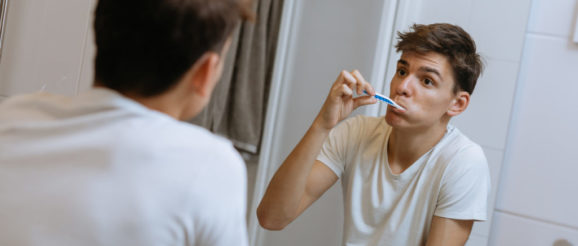Aalto innovation could fix Finland’s poor dental health

Finnish men and boys have one of the worst teeth-brushing track records in the OECD, with a particular challenge being to persuade them to brush more than once per day.
A new study carried out by the Finnish Institute of Health and Welfare THL finds that just 35% of young men at vocational school brush their teeth twice per day. That’s compare to 62% of female students who manage to brush their teeth twice per day.
According to experts, this reluctance to brush more often is found in particular in Finnish culture, and is a learned trait passed on from fathers to sons.
THL Development Manager Päivi Mäki, Emeritus Professor Hannu Hausen and Special Researcher Heli Kuusipalo highlight in a new report how dental habits of Finnish men are significantly worse than those of Finnish women.
Just 53% of Finnish men over 30 brush their teeth twice per day – whereas up to 80% of women do it.
Changing these habits, say researchers, requires a long term effort because habits are developed early on.
“Brushing your teeth in morning and evening should start as early as when the first teeth erupt” the latest THL report advises.
“Healthcare professionals meet the children, adolescents, and families regularly at dental healthcare and school health care and are in a good position to guide the healthy lifestyles and habits. Reminding people of regular teeth brushing and discussing eating habits are a natural part of health checks” the report concludes.
New dental innovation hitting the market soon
Encouraging Finns – especially men – to take better care of their dental health might be getting a bit easier with a new product coming to the market soon.
Koite Health, founded by researchers from Aalto University and Helsinki University Hospital HUS, have developed a method of killing up to 99% of bacteria on teeth.
The treatment begins with a mouthwash which coats teeth and plaque with a light-absorbing compound. Then a light activator shield goes in between the teeth for a 10 minute treatment.
“The photosensitive substance in the effervescent tablet adheres to the surface structures of the bacteria. Red light activates the substance and initiates a chain-reaction that kills the bacteria. Antibacterial blue light administered at the same time significantly enhances the effect,” explains Researcher Tommi Pätilä.
According to Pätilä, dentists are already familiar with light activated antibacterial methods in their surgeries, but this is one of the first products available for home use.
